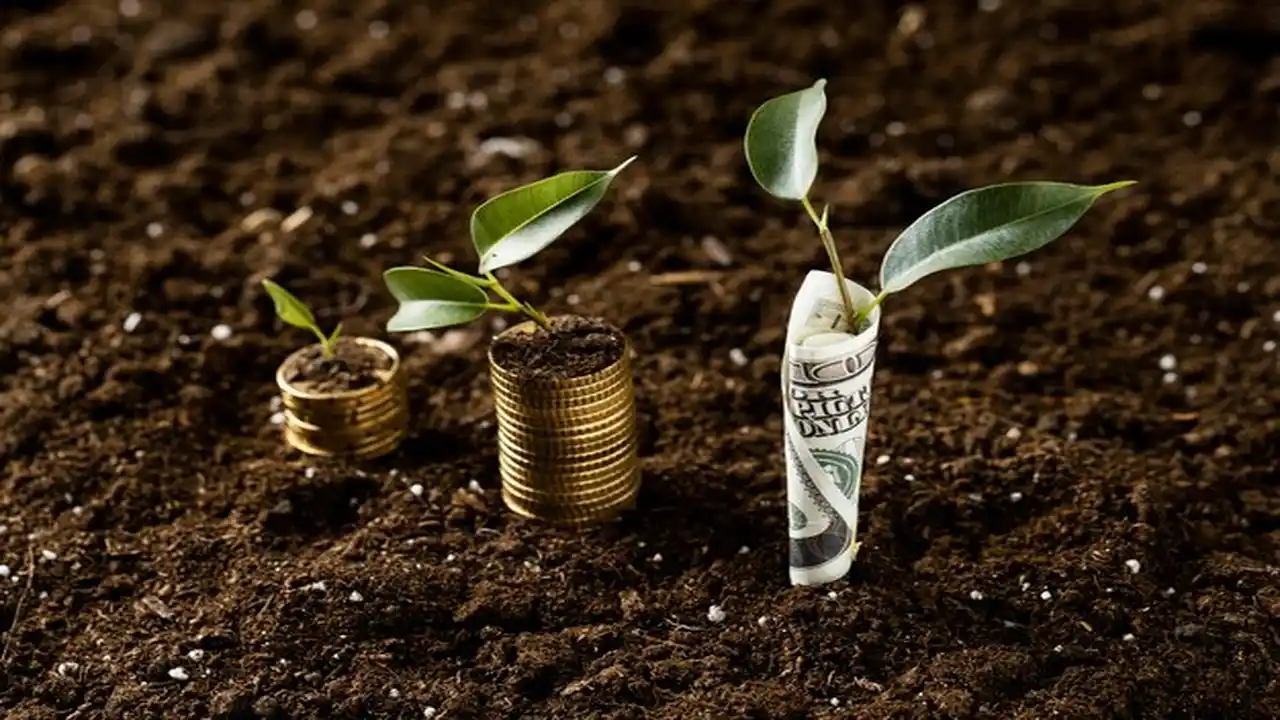A money tree, or Pachira aquatica, is exceedingly unlikely to be recognized in its natural environment of Central and South American marshes. The tree may grow to a height of 60 feet (but indoor culture limits its growth to 3 to 6 feet) and has a braided ornamental trunk, which is an extremely unique feature. The nursery’s cultivators painstakingly plait the immature, flexible trunks into elaborate designs before they solidify into wood. Check out these money plant care to enhance your knowledge.
If you can’t keep your money tree in a bright, steamy bathroom, make a pebble tray by filling a shallow tray with small rocks, partially covering the rocks with water, then placing the plant on top of the tray to boost humidity. This will ensure that the plant obtains sufficient moisture. Money trees can only be grown successfully outside in USDA zones 10 through 12, hence they must be kept as houseplants outside of these zones.
Money Plant Care
When the plant matures, it will have a strong trunk and a profusion of branches. According to Hachadourian, at this point, it can be fixed with a small stake or let to develop horizontally into serpentine shapes. “If the plants are too tall, you can easily cut the tip of the growth, leaving several inches of stem and root the tip as a new cutting,” the expert said. “As plants get older, they will make side branches, which can be left to allow the plants to develop into many leaved specimens or removed and propagated to increase your collection or share with others.” The following are the money plant care:
Repotting
Repottering indoor money trees needs the use of a peat moss-based soil mixture specifically suited for commercial use. To guarantee good drainage, the potting mix should also include perlite and around 25% coarse sand. In the case that sand is unavailable, clean pea gravel can be used. A comparable function may theoretically be realized. Before utilizing the new container, make sure the bottom has drainage holes. If you live in a temperate region, Pudwell recommends planting outdoors beneath the canopy of an existing tree, in a place with good drainage, average fertility, and water access.
Watering
Money trees thrive with regular room temperature water due to their preference for high humidity. Placing them in high-traffic areas like kitchens or bathrooms is suitable, provided there’s ample light. Regularly bathing the plant’s foliage with warm water helps maintain cleanliness and reduces the risk of pests. The recommended watering method involves inserting a finger until the first knuckle; if the soil feels dry, generously soak the pot until water reaches the saucer. If water doesn’t reabsorb within two hours, empty the saucer to prevent root decay. During dry winter months, use a humidifier to ensure year-round health, being cautious not to overwater.
Plant Reproduction by Cuttings
Avoid rooting Pachira aquatica cuttings in water; instead, use a rooting medium like construction sand, a 50/50 blend of peat moss and sand, or a peat moss/perlite mixture. Select a healthy limb with at least two to three nodes and robust foliage, at least six inches long. Trim in the morning with clean, disinfected pruning shears. If you can’t plant immediately, wrap the cutting in a wet paper towel and place it in a plastic bag for up to a day. Remove bottom foliage, dip in rooting hormone, and use a pencil to create an opening in the medium. Insert the cutting carefully, and surround it with a plastic bag, ensuring it doesn’t obstruct the top. The bag maintains increased humidity without wetting the rooting material excessively. Rehydrate the plastic if no condensation appears. After four to six weeks of protection from direct sunlight, expect new growth and roots.
Sunlight
A healthy money tree demands indirect but bright sunshine, so finding the ideal place for your plant should be simple. Consider placing a plant stand in the home office or living room, both of which receive very high levels of sunshine. A lack of light, on the other hand, may cause the plant to stop growing and its leaves to become yellow. Direct sunlight causes foliage to quickly become black and brown. Money plant care is essential for maintaining the health and vitality of these green companions, encompassing watering, light exposure, and attentive nurturing.
Corrections and Instructions
Pruning mature plants primarily serves to eliminate dead timber exposed to the environment. Prune occasionally in autumn to control size, cutting older, taller stems as needed. Braided plants are low-maintenance houseplants, but braiding can be challenging. Use a young plant with at least three flexible stems, taking care not to damage them during the weaving process. If braiding takes more than a day, use string to secure the plant temporarily. Wire can also shape the plant like a bonsai, requiring ongoing effort to maintain a reasonable size. Regular pruning is essential for bonsai money trees, regulating growth and encouraging leaf production in specific areas.
Fertilizer
For optimal spring results, use a high-nitrogen fertilizer, preferably 12-6-6, to promote new growth. Transition to a balanced fertilizer like 10-10-10 as summer approaches. In autumn, shift to a lower nitrogen content of 3-10-10 to support root development. Potassium enhances root strength and flower growth. Aim to spread seasonal fertilizer evenly over a month, applying liquid fertilizer at one-fourth strength weekly or a half-strength solution every two weeks. Adjust watering timing to avoid overwatering before fertilizing. When using slow-release granular fertilizers, water normally, ensuring even dispersion in the top soil. Skip winter fertilization as it’s unnecessary and won’t stimulate new growth during this period.
Harvesting
Pachira plants produce seed capsules that open to reveal enclosed seeds after drying. Once the pods crack open, keep the seeds in the container until they naturally disperse. Aid seed collection by wrapping landscaping fabric around the plant base. Regularly check on the seeds once the pods start opening for a consistent supply. Pachira seeds are edible raw or cooked through methods like roasting and frying, resembling peanuts raw and chestnuts when cooked. Grinding them produces flour suitable for breadmaking. Ongoing studies explore the effects of these seeds on human health, especially considering their high concentration of potentially dangerous cyclopropenoid fatty acids. While some have consumed them without issues, it’s advisable to exercise caution. Start with a small amount to assess tolerance and avoid potential adverse effects.
An Outdoor Lifestyle
“Of course, they can spend the summer outdoors in some shade and still get the most out of their vacation in our summery tropical conditions,” he says. Make an effort to spend as much time as possible in indirect sunshine. Additionally, make certain that the plant is not located in an area where wind could cause damage. Throughout the night, the minimum temperature will not go below 50 degrees. They will need more water when functioning outside because to the rapid evaporation of the water in the kettle.
Growing New Plants from Seed
To start a money tree from scratch, collect spores from dried and cracked seed pods of an older plant, discarding damaged nuts. Prepare storage with containers having drainage holes. Mix potting soil, coarse grit, and perlite for a well-draining potting mixture. Saturate containers, sow seeds at a quarter-inch depth, and water gently. Ensure the soil stays warm for germination. Provide indirect and bright light, watering when the topsoil is dry. If using a germination mat, monitor soil moisture. Once growth appears, remove the plant from the mat. During the first season, place plants in a well-lit area, then transition to final pots or expose them to the weather.
Soil
Money trees can flourish in a wide range of soil conditions. The ability of a soil to permit rapid water outflow is the major determinant. Clay-like soils are characterized by muddiness and oversaturation. It is recommended to remediate clay-like soil by inserting a substantial amount of peat or organic material. Perlite can also help with drainage, as can providing enough drainage apertures in containers housing trees. Container-grown trees require a potting mix with proper drainage. To thrive, your money tree needs a mix of loamy and humus soil. Furthermore, sediment can be integrated without causing any problems. In the natural, they can survive for short periods of time in waterlogged habitats; however, the water must drain quickly. The preferred pH range for soil stability is 6.0 to 7.5. They can thrive on both alkaline and acidic soils, but neither is ideal for their development.
Temperature
Money trees require temperatures ranging from 60 to 75 degrees Fahrenheit to grow, according to West Coast Gardens. It has the following ideal growth range. Avoid placing your plant near drafty doors and windows, radiators, and air conditioners. Money plant care involves regular watering, appropriate lighting, and occasional pruning to ensure its health and vitality.
FAQ
Does the Money Plant Benefit from Milk?
True, the money plant benefits from milk in order to hasten the arrival of good fortune. It is said that the goddess Lakshmi lives in such a mansion indefinitely. It is not advisable to immerse the money plant completely in milk. Offer him a glass of water with a dash of unpasteurized milk in it.
Is it Possible to Steal a Money Plant?
The only safe place for money plants is indoors. Vastu principles state that removing or plucking the foliage of a money plant in one’s home is forbidden since it represents the eradication of wealth and achievement. Because of its capacity to thrive in low-light circumstances, this plant is well-suited for residential cultivation.
Can i Water my Money Plant with Coffee?
Money trees benefit the most from recycled coffee grounds or compost tea. Many people, and for good reason, advocate the use of spent coffee grounds as fertilizer in household gardens. Coffee grinds offer plants with natural nutrients that are necessary for their health and growth.
Summary
The money plant, as the name implies, offers its owners a substantial income opportunity. According to Vastu, it repels harmful energy while admitting favorable ones. According to vaastu gurus, having a “money plant” in one’s home increases the likelihood of financial success and bestows prosperity and fortune on the family. Always bear in mind that money plant care plays a significant part in the whole process while carrying out various operations. Read more about chinese money plant subject to expand your perspectives.





